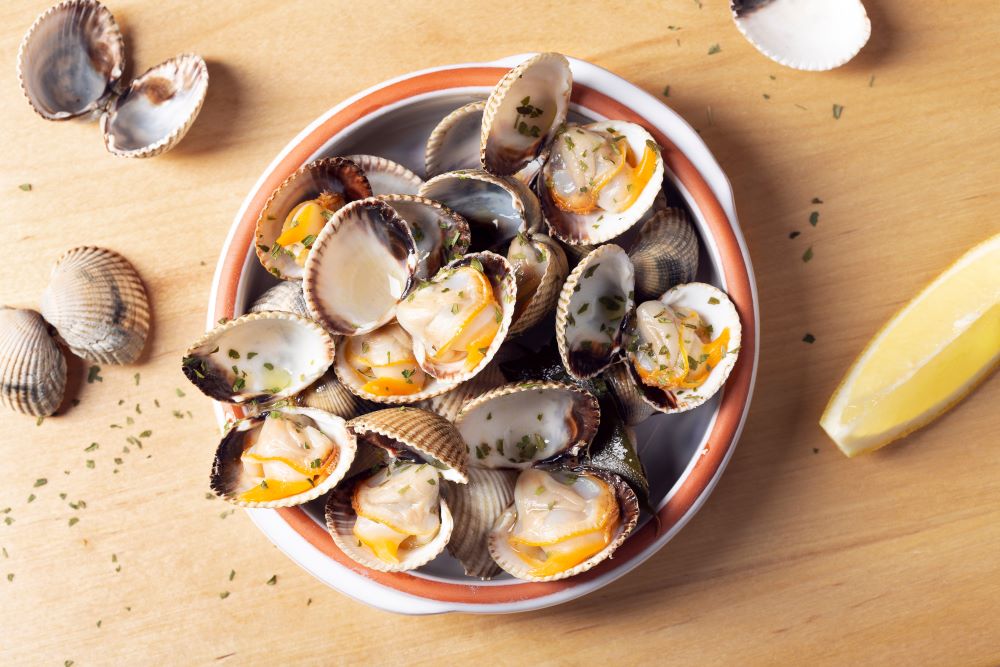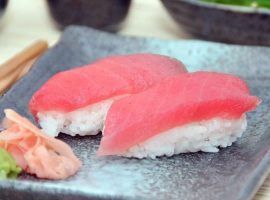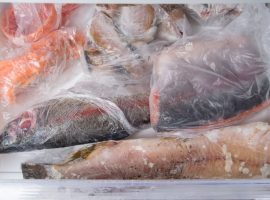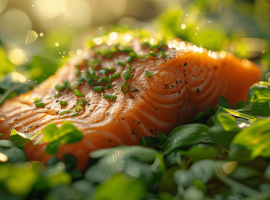In the UK, cockles can be found along protected seashores. They are lovely, juicy, and oval-shaped. The traditional Welsh Breakfast includes cockles, laverbread, and bacon, but they can be used in other dishes as well.
The best way to taste fresh cockles is straight from the seashore, but you can find them brined in supermarkets. Cooked into paella to add a Cornish twist, they pair well with seafood pasta dishes.
The diversity and availability of our products are what make us stand out as a business. Crustaceans and shellfish are also available along with our finned fish. A wide variety of mussels, lobsters and crabs are available at our online store. Taking a look at cockles today.
What are Cockles?
Despite being a Dublin specialty, cockles can be found worldwide. Shells have a delicate, heart-shaped flesh inside, which is delicious when consumed boiled, steamed, or raw. Although cockles are members of the clam family, the salty flavour of cockles is worth putting in the effort for.
The cockle is a bivalve mollusc. The two hinged parts of their shells protect a soft body within. They live in saltwater and burrow on the seabed beneath the sand. Filtering water through their shells allows them to feed on microorganisms and plankton. Cockles are distinguished from other clams by their pale colour and ridges on their shells. A prized specimen will measure 8cm in diameter, while most cockles will measure 2-4cm in diameter. Avoid collecting cockles smaller than those needed for landing.
Currently, 11,000 tons of mussels are collected per year along sandy coasts, including East Anglia and Morecambe Bay.
Frozen Fish Direct’s Cockles
A variety of cockles are available with shells on, shells off, or brined. Essex cockles are our favourite. We want to make it as easy as possible for you to enjoy the cockles you remember from your trip to the coast. It is important to wash raw, shell-on cockles thoroughly after catching them to remove any sand from their shell.
You can serve cockles by themselves as well as on shellfish platters. Their cooking time is short, while lemon and white wine flavours give them a traditional touch.
The Best Time to Buy Cockles
From June to September/October, there is a good season for catching cockles. Upon being caught, the cockles are returned to the factory, where they are cleaned, cooked, and packaged before being distributed across the country and abroad.
The product is also available frozen all year long.
Cockles of the Highest Quality
The darker the shell, the lighter the flesh, considered the best-tasting cockle. It is important that the shells remain closed, and that they smell fresh. Tap any open cockle shells against a hard surface if they are open. Cockles should close when this is done – if they do not, discard them.
Preparing Cockles
In many cases, the shells of cockles are filled with sand, which requires an extended period of soaking in fresh water. Drain the cockles in a wide colander and rinse them with cool water. Get rid of any algae or dirt on the shells by scrubbing them with a soft sponge.
Storing Cockles
Fresh shellfish can be stored in the fridge drawer by using a bowl and covering them with a damp cloth. The shellfish can be kept in your refrigerator for at least two to three days, but they are always best eaten right away.
Cooking Cockles
You will need a large pan that has a lid if you want to steam them. Adding white wine vinegar or lemon juice to boiling water will make it taste better. Cook the cockles in a pan, covered. The shells will pop open after a few minutes of cooking. Afterwards, the orange cockle is easy to pick out and eat.
In many cases, cockles are considered shellfish garnishes, accompanying steak or fish. They can, however, be used in a variety of ways, not just for seafood. Veal sweetbreads are a great pairing for cockles. Lancashire Hot Pots can also be enhanced by beer-braised cockles. Lamb and cockles sound like a natural pairing as well.
You can also cook cockles in white wine with pancetta, shallots, and basil, which is a delectable way to prepare cockles. Cheese sauce shouldn’t be served with cockles. Often, a little lemon, olive oil, and herbs enhance the taste of cockles when tossed in pasta.
The Best Alternatives to Cockles
If you like mussels and oysters, try them. The recipes can also be substituted with littleneck or cherrystone clams in place of cockles. Every four cockles, utilise one littleneck, and every three cockles, make use of one cherrystone.






